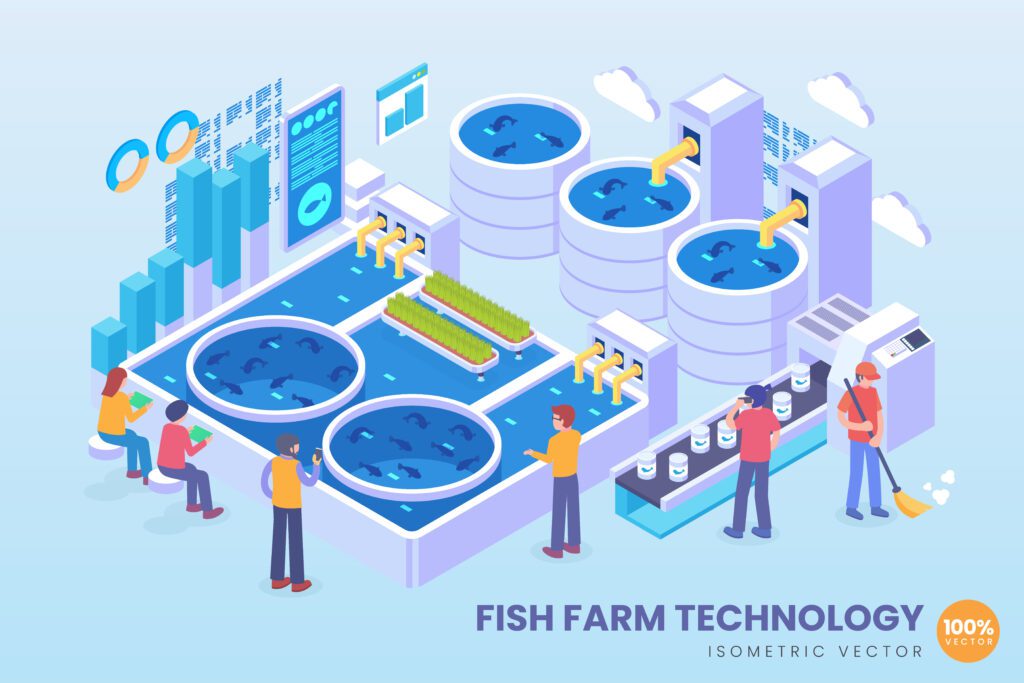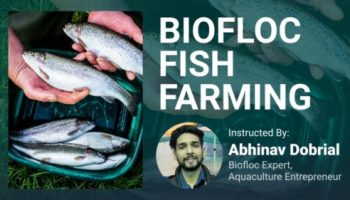The world’s population will surpass the 9 billion mark in 2050. Besides food security, food sustainability is becoming a hot topic and new or emerging businesses in the food production space are now scrambling to make themselves increasingly sustainable so that they don’t lose their relevance in the coming decades. Aquaculture per se has found itself at the forefront in the food sustainability debate for as long as environmental activism and food sustainability debate picked up. In fact, if done correctly, aquaculture is deemed to be the most efficient method of cultivating consumable protein.
Aquaculture is essentially the art of breeding, rearing and harvesting organisms like fish, crustaceans, shellfish and algae for various purposes, in a variety of water environments. It is not only used to meet food-related needs, but also to replenish and restore the habitats of the organisms who may have been over-fished in a certain epoch, thereby unbalancing the marine biodiversity.
The two broad categories of aquaculture are – freshwater aquaculture and marine aquaculture. While freshwater aquaculture is usually done in ponds and other man-made systems. Common fish farmed in freshwater aquaculture systems include trout, catfish, etc. Marine aquaculture on the other hand has a wider arsenal of species that it can harbor, including shellfish like oysters and mussels, crustaceans like prawns, and fish like salmon, seabass, yellowtail, etc.
Irrespective of whether you’re involved in marine or freshwater aquaculture, there are proven methods and tricks that can help you ensure sustainability and longevity of business as well as biodiversity.
Optimizing the Farm Layout and Design
If you’re looking to start a new fish farm, you could look at a land-based recirculating aquaculture system (RAS) to give yourself an edge. Let’s talk about the location first – inland or land-based aquaculture sites offer the advantage of reduced environmental impact of farming fish (such as alteration, or sometimes even destruction of natural habitats of marine life).
Together with the option of establishing an inland site, RAS can make aquaculture location agnostic, i.e., you can practice aquaculture in cities and suburbs by attaining up to 100% water recycling (and making do with much less water supply than you’d traditionally require) within the RAS. It is the most sustainable freshwater aquaculture system across the world. Another extremely efficient and upcoming system is biofloc or BFT, which can work wonders from cost to benefit perspective if you have limited space and man-hours.
Further, it is estimated that oceans contribute to less than 2% of the food requirement of the world! While it might seem like a no-brainer to establish an aquaculture farm in three to four nautical miles area from the shore, given you’re closer to all farmable marine life’s habitat, the deep-water currants and uncontrollable nature of the nutrient content in deep-sea water make it difficult to practice organized farming. Therefore, in marine aquaculture, it makes more sense to move closer to the shore and establish the farm in shallow, nutrient-deficient water so that the farm’s sustainable system of converting waste to nutrient can optimally run, without facing resistance from the uncontrollable deep ocean.
Managing Feed
Sometimes, there’s a notion among fish farmers that overfeeding would result in plump produce and fetch a better price in the market. However, overfeeding has two major disadvantages –
- Overfed pallet doesn’t get absorbed in the proportion that adequate feed does, thereby getting excreted by the fish. Further, overfeeding also weakens the fishes’ immune system and in an extreme scenarios, encourages mortality;
- If the excreta go beyond the number of excrements the system can support and convert into nutrients, it ends up contaminating the culture water, posing a health risks to the fish and low-quality produce.
Therefore, the feed should be adequate in quantum and generous in quality. Sometimes, fish farmers try to reduce cost by giving a low-quality feed. If the feed is low quality, it’ll run the risk of getting ignored by fish and landing on the floor, ultimately piling up to contaminate the culture water, and environment.
More so, it may cause underfeeding and ultimately, low quality produces. Additionally, providing only one kind of feed may not meet all dietary requirements of the fish, therefore, the feed must be composed of the suitable high-quality pallet as per the species being cultivated. In areas where pallet feed is not available, a suitable nutrient mix should be ensured in non-pallet feed such that it’s absorbable and high-quality.
Cultivating seaweed
The sub-practice of planting carefully chosen seaweed to create forage and refuge habitat for fish, shellfish, crustaceans and other marine life is called Seaweed Restoration Aquaculture. Often the culture water gets polluted with toxic metallic substances and other unwelcome contaminants, aquatic plants do to water what terrestrial plants do to air. Planting seaweed is an affordable and natural method to keep the culture healthy and harsh-chemical free.
However, one must understand that since these seaweeds are grown for purification purposes, they should not be consumed as food, and food-grade seaweed should be cultivated separately. Large, fast growing kelp varieties are a great seaweed ‘crop’ that is chosen by many fish farmers to improve the health of the coastal ecosystem in marine aquaculture.
The above mentioned tips are more universal in nature and usually, work for aquaculture practices irrespective of the size and context of the establishment. The more recent technological advancements in the aquaculture space (like BFT or Biofloc Fish Farming Technology) have taken sustainability as their core and developed a system that is built to assure longevity to the business, without skimping on the profit potential. We hope that you’ll be able to implement some of these tips into your own practice and propagate the benefits to anyone who’s interested in entering the world of aquaculture.



